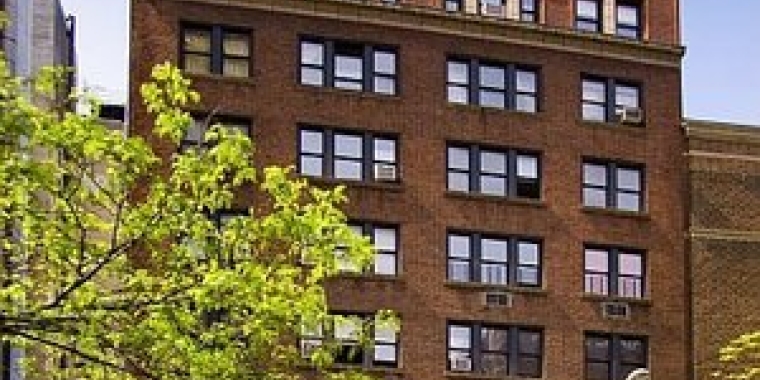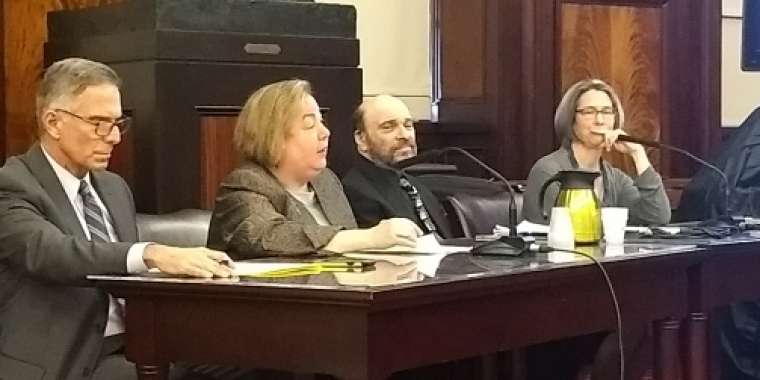
Testimony Before the New York State Division of Housing and Community Renewal Regarding the Preliminary Standard Adjustment Factor for the 2004/2005 Maximum Base Rent Cycle on January 6, 2004
Liz Krueger
July 12, 2010
I am State Senator Liz Krueger and I represent the 26th Senatorial District, which includes the Upper East Side, East Midtown and Midtown areas of Manhattan. I want to thank you for providing me the opportunity to testify on the proposed Standard Adjustment Factor (SAF) for the 2004/2005 MBR cycle.
A SAF of 17.24% would be devastating for the tens of thousands of elderly low- and moderate-income rent controlled tenants in New York City. According to the 2002 Housing and Vacancy Survey, rent controlled tenants continue to maintain the lowest average income of any group of renters in the city, earning a median household income of only $20,120 in 2001. The vast majority of rent controlled tenants, who have a median age of 68 and on average already pay a greater percentage of their incomes for housing than any other group of residents, do not have incomes that have been able to keep pace with previous rent increases of 7.5% a year. Many of these tenants have already seen their rents more than double in recent years due to SAFs significantly higher than the consumer price index along with repeated MCIs. I fear that a SAF of 17.24% will make it impossible for many rent controlled tenants to pay for essential goods, and will place many of our city’s most vulnerable residents in danger of eviction.
While it is reasonable to expect rent controlled tenants and landlords to share the burden of increased operating costs, this burden must reflect real, rather than inflated costs, and should be shared in proportion to each group’s ability to pay. I believe a SAF of 17.24% will overcompensate the vast majority of owners of rent controlled units for the increased operating costs incurred. Building owners can legitimately claim that their operating expenses have risen significantly during the last year due to the rising property tax rates and the costs of insurance and fuel. At the same time, the rent regulated real estate market continues to be one of the most consistently profitable in New York City. This sector of NYC’s real estate market remains so strong that even after the recent rise in operating expenses, Crain’s New York Business described it on May 5th, 2003 as “one of the hottest segments of the New York real estate market…the stock market is volatile, and the commercial real estate market is too risky for many investors. Refinancing is cheap. Rent Regulated buildings offer a consistent return.”
Owners of rent regulated buildings have done extremely well during the past decade. According to the Rent Guidelines Board’s 2003 Income and Expense Study, owners’ Net Operating Income (the amount of income remaining after all operating and maintenance expenses have been paid) has risen almost every year since 1989. This same study reveals that owners’ average net operating income increased by 19% from 1989 to 2001 after adjusting for inflation. The fact that insurance and tax costs have increased this year, as reflected in this year’s SAF and the RGB’s Price Index of Operating Costs (PIOC), must be understood in a larger historical context. The dramatic increase in Net Operating Income since 1989 suggests that both the RGB and DHCR have historically dramatically overestimated owners’ operating and maintenance costs.
Furthermore, I believe a SAF of 17.24% for the 2004/2005 MBR cycle undermines the spirit, if not the letter, of New York City’s and State’s rent control statutes. The NYC Council created the MBR system in 1970 specifically to prevent “speculative, unwarranted and abnormal increases of rent” in the context of a housing emergency in which the normal market conditions of supply and demand did not apply – conditions which continue to exist today. The City Council created the MBR system formula in an attempt to construct rent levels that protect tenants and the general welfare while permitting owners to maintain their buildings, be compensated for increased costs and obtain a return on their investments in the context of a market driven by chronic scarcity and instability. After studying the existing conditions in 1970, and exploring hundreds of possible formulas to measure investment returns and changes in operating costs, the City Council enacted the current MBR system into law. While the SAF formula may have accurately reflected owner costs and profit levels in 1970, the significant market and legislative changes that have occurred since then have made the SAF formula an anachronism that harms tenants and overcompensates landlords.
The market and legislative changes which have occurred since the creation of the MBR system, coupled with the fact that the system has never been administered as its founders intended, have entirely undermined the legislative intent of the law. The MBR system was designed in 1970 for a rental market in which there were over a million rent controlled apartments, vacancy decontrol did not exist, New York City controlled all of its own rent regulation laws, inflation was high and the market value of most properties was comparably low. The reality in 2004 is very different!
The SAF formula was crafted based upon the assumption that all rental buildings’ revenues and costs would be generated solely from rent controlled and commercial units; the presence of rent stabilized and free market rentals that dominate today’s market was not considered. The SAF formula fails to separate the significant revenues generated by rent-stabilized and free market units (which exponentially increase the assessed values of buildings containing rent controlled units) from those generated by rent controlled units. Because a substantial portion – perhaps more than 50% – of each SAF is based upon changes in assessed values of buildings containing regulated units, the formula’s failure to allocate unrelated revenues unjustifiably increases the SAF. A formula that was intended to reimburse costs and prevent unnecessary rent increases has ironically created a situation in which rent controlled tenants pay more every time an owner’s revenue increases. As building revenues continue to rise as more and more apartments are subject to vacancy increases, MCIs and deregulation, the assessed values of rental buildings (and the SAF) will continue to skyrocket.
A situation in which vulnerable rent controlled tenants pay more as landlords’ profits and property values increase could never have been envisioned when the MBR system was created. However, statements made by the legislators who created the MBR system, the information sent to rent controlled tenants in the early 1970s, and the New York City Administrative Code all clearly indicate that the SAF formula should be adjusted when there are significant variations between the formula and the actual costs incurred by owners. Unfortunately, the Urstadt Law of 1971 and the Omnibus Housing Act of 1983 prevented the Council from updating the SAF formula as market conditions and legislative conditions were altered.
While the New York State Division of Housing and Community Redevelopment (DHCR) claims that it cannot address these problems by updating the SAF formula without new state legislation, DHCR can take a number of important administrative steps to lessen the burden on rent regulated tenants. Some of these changes should include:
- MBR increases are intended to be directly tied to the condition and upkeep of each subject building. To qualify for increases, landlords must submit written certification that all rent-impairing violations, and 80% of non rent-impairing violations, have been cleared. In the past, DHCR granted MBR increases following a MBR inspection by a city housing inspector who certified all violations had been cured. DHCR should end the self-certification system and return to its former policy. If this is too cost prohibitive, DHCR must, at the very least, conduct random inspections.
- State and city laws clearly give DHCR legal authority to calculate MBR increases on a building by building basis. This would help to ensure that increases more closely reflect the actual revenues and expenses of each building, and would make it easier for tenants to challenge inaccurately calculated costs.
- The NYC Administrative Code states that the agency administering the MBR system is to require all owners to make their books and financial records relating to the operation of their buildings available at least once every three years, and to alter the SAF formula if there are significant variations between the formula and actual costs. To the best of my knowledge, this is not done. DHCR must begin to conduct such audits on a regular basis.
- DHCR should alter its methods of collecting income and expense data. DHCR presently relies upon data supplied by owners to the NYC Department of Finance. Serious questions must be asked about the reliability of unaudited owner-certified data. In fact, each year the Rent Guidelines Board staff calculates average owner operating costs using a number of different formulas specifically to address this problem. DHCR must actively audit the data it collects and investigate possible alternative data sources.
- The law states that to qualify for MBR increases, landlords must certify that 90% of the MBR increase will be put back into the operating and maintenance cost of their buildings. DHCR should conduct random studies to see if this is the case.
· Finally, DHCR can improve the quality of information it provides to rent controlled tenants and the speed with which it processes overcharge complaints. DHCR should ensure that tenants are aware they have the right to challenge MBR increases, and that increases are contingent upon the upkeep of buildings.
While none of these administrative changes would solve the problems inherent in the flawed MBR system, I believe they would begin to make it more equitable. While I understand that altering the administration of the MBR system will not be easy, it is imperative that changes be made if we are to protect the homes of some of our state’s most vulnerable residents.
Thank you again for the opportunity to testify. I look forward to continuing to work together on this and other important issues.
Share this Article or Press Release
Newsroom
Go to Newsroom
Resources and Advocacy for Your Community - Winter 2017
November 27, 2017
Testimony To The NYC Council Regarding Sutton Place Rezoning
November 21, 2017

Senator Krueger's Community Bulletin - November 2017
November 6, 2017
